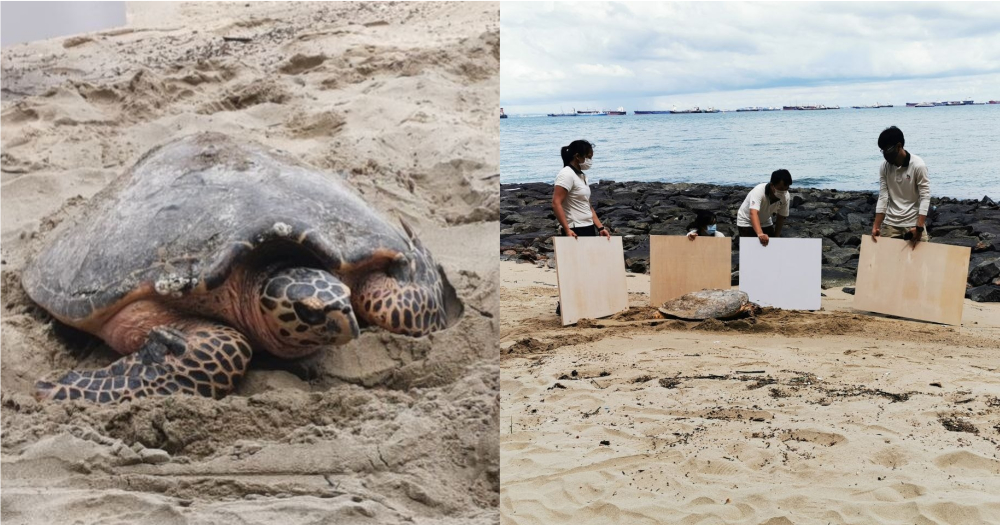Editor's note on July 3: NParks clarifies that the female turtle was only tagged after it was about to return to the sea. The turtle was not disturbed when it was trying to nest at the site.
Another Hawksbill turtle was sighted by a member of the public on July 2 morning at East Coast Park (ECP).
Hawksbill turtles are a critically endangered species that are occasionally spotted nesting on Singapore shores.
While one hawksbill turtle has successfully laid eggs last month in ECP on World Turtle Day, the female turtle spotted this morning did not seem to find a spot to her liking.
Critically endangered Hawksbill turtle visits East Coast Park on July 2
According to the National Parks Board (NParks), the female turtle is likely to have arrived at ECP at around 10am.
Based on its size, this female turtle is unlikely to be a first-time mother.
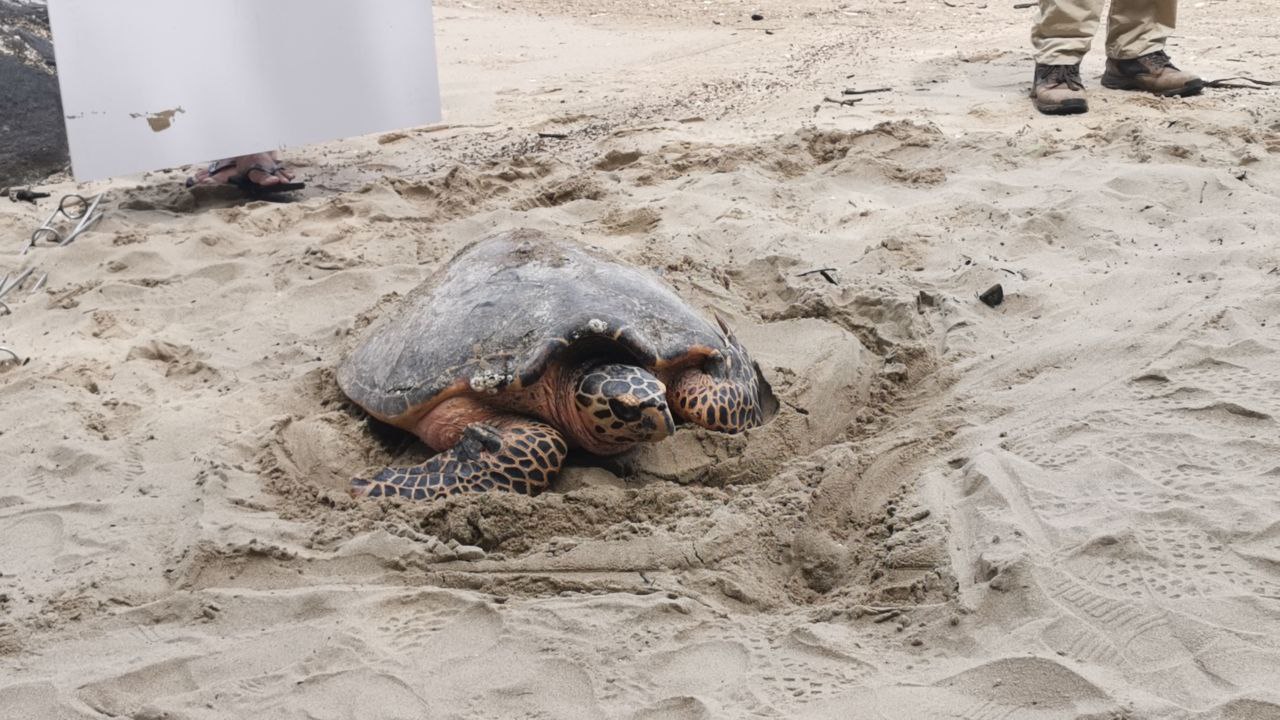 Photo by Zheng Zhangxin.
Photo by Zheng Zhangxin.
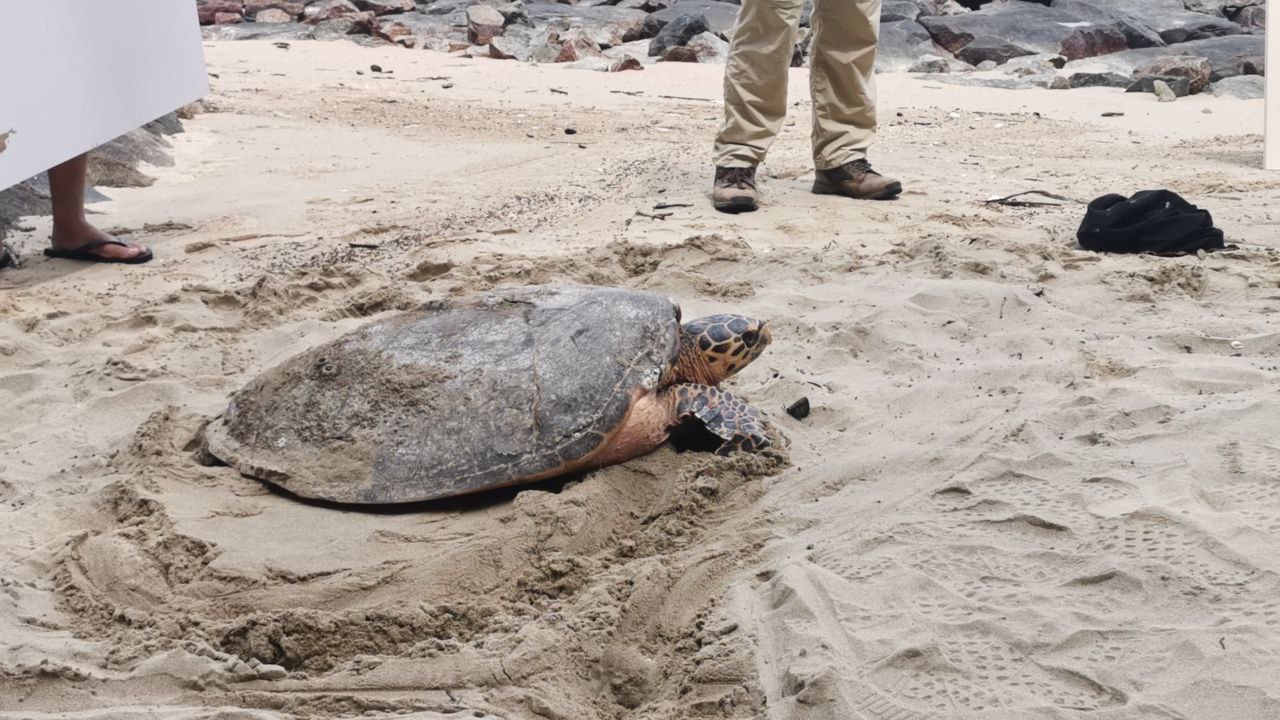 Photo by Zheng Zhangxin.
Photo by Zheng Zhangxin.
It had supposedly tried a few spots, leaving some tracks on the sand, but it did not lay eggs eventually.
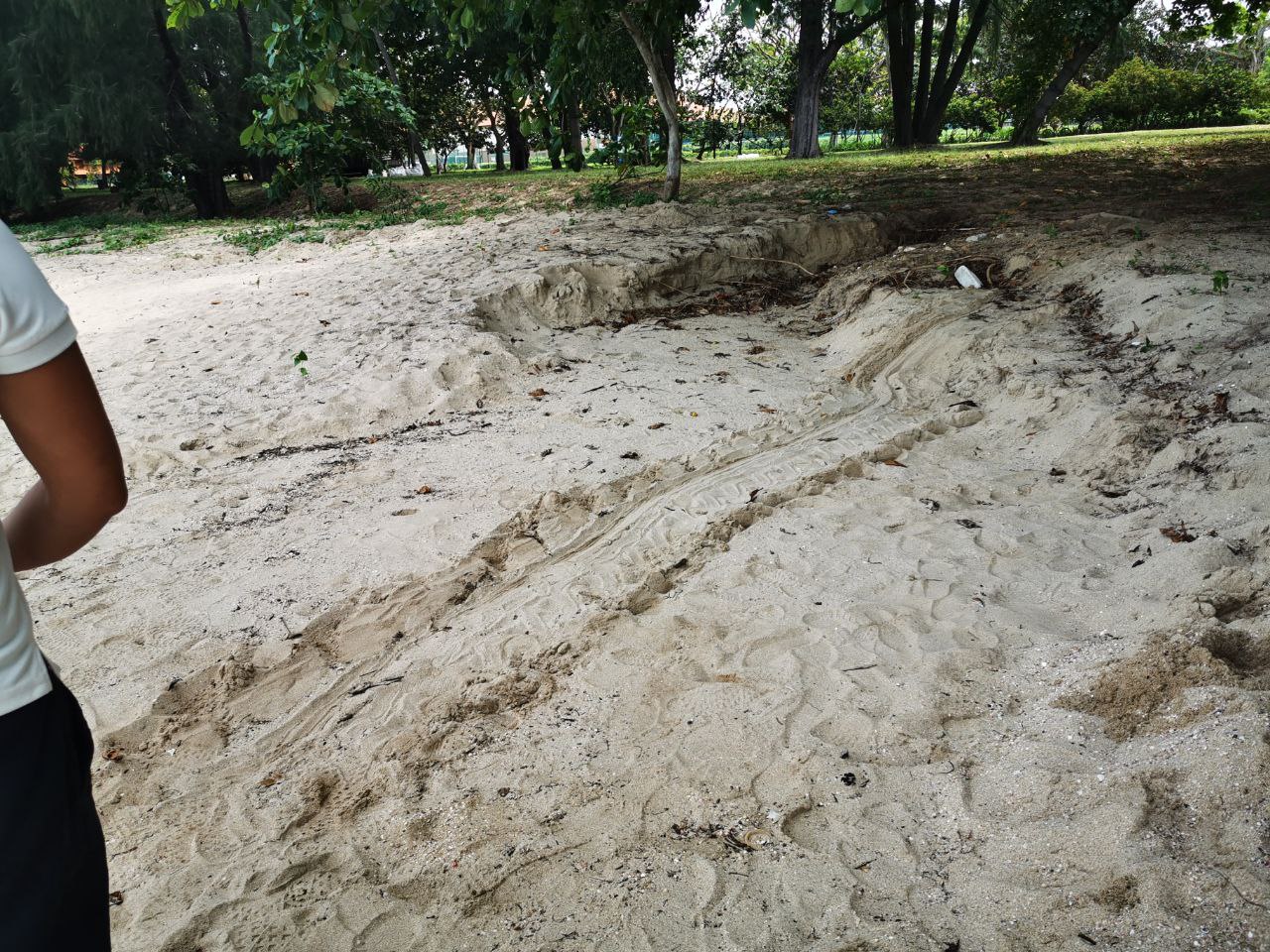 Photo by Zheng Zhangxin.
Photo by Zheng Zhangxin.
One of the first few turtles tagged in Singapore
NParks officers arrived on site then measured the turtle shell, collected some blood samples, and tagged the flippers for monitoring and conservation purposes.
These were done after the female turtle was about to return to the sea.
Two metal tags pierced through the flipper skin so that these turtle individuals can be identified in the future.
Flipper tagging only started this year in Singapore which makes this female turtle one of the first few to have a Singapore coded tag.
The whole tagging process takes about half an hour today.
Prior to the tagging, the officers also tried to calm the turtle down by cordoning the turtle off with wooden planks and putting a piece of damp cloth to cover its eyes.
Prior to piercing, the flippers and equipment are cleaned. If barnacles are found on the flippers, they will be removed as well.
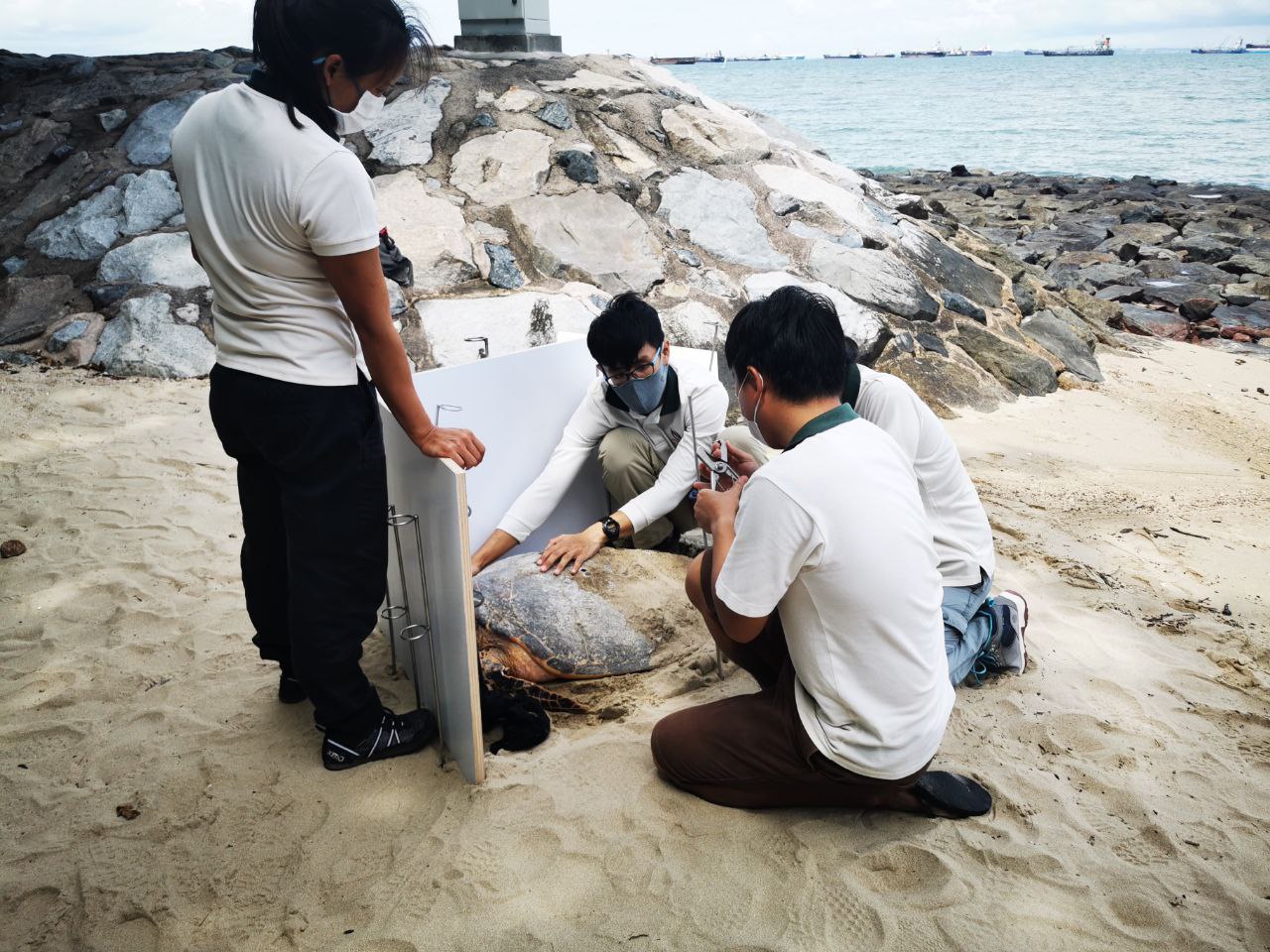 Photo by Zheng Zhangxin.
Photo by Zheng Zhangxin.
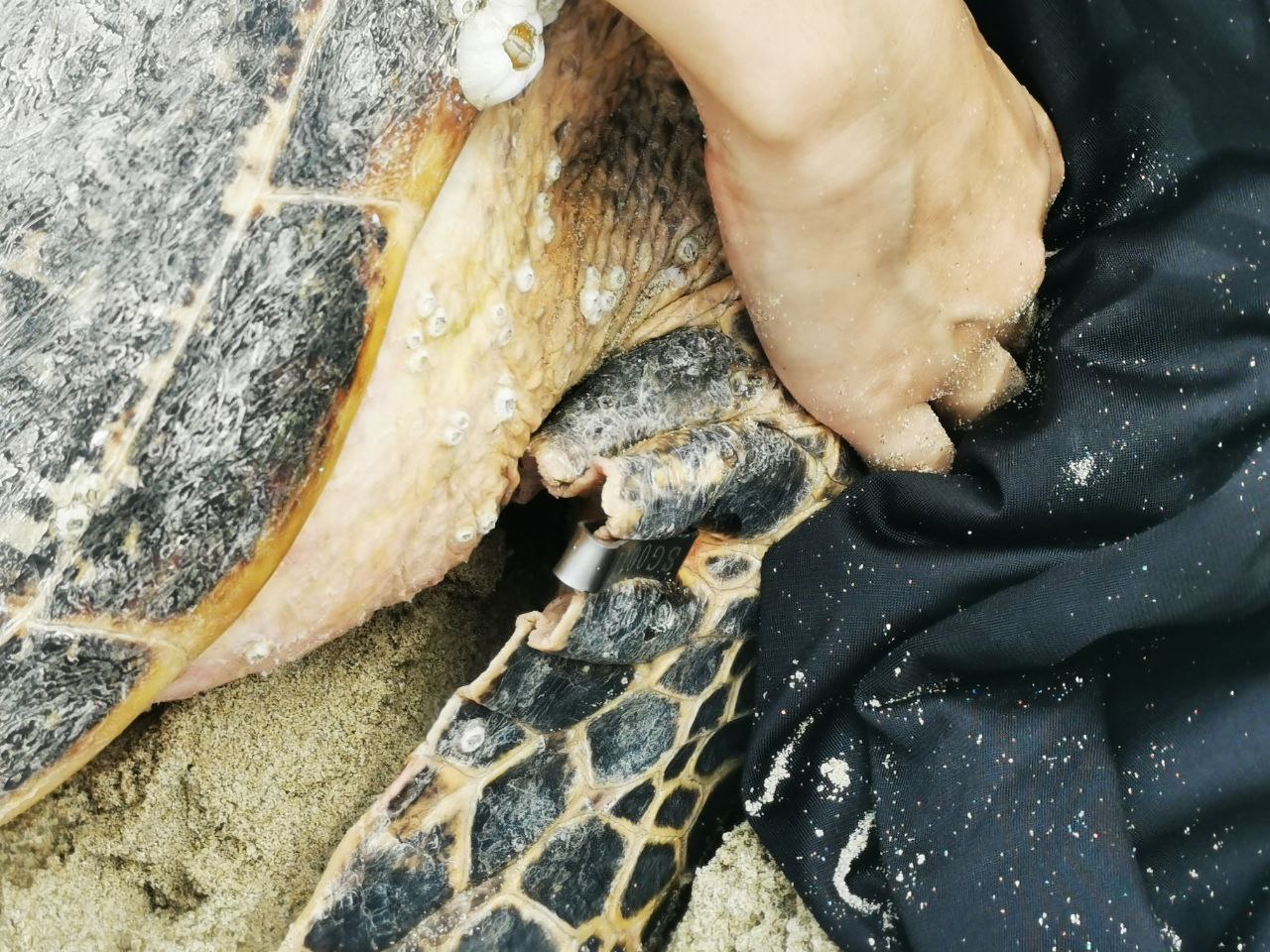 Photo by Zheng Zhangxin.
Photo by Zheng Zhangxin.
Here the NParks officers tried to guide the turtle back to the sea on the sand, preventing it from heading to the rough seawalls:
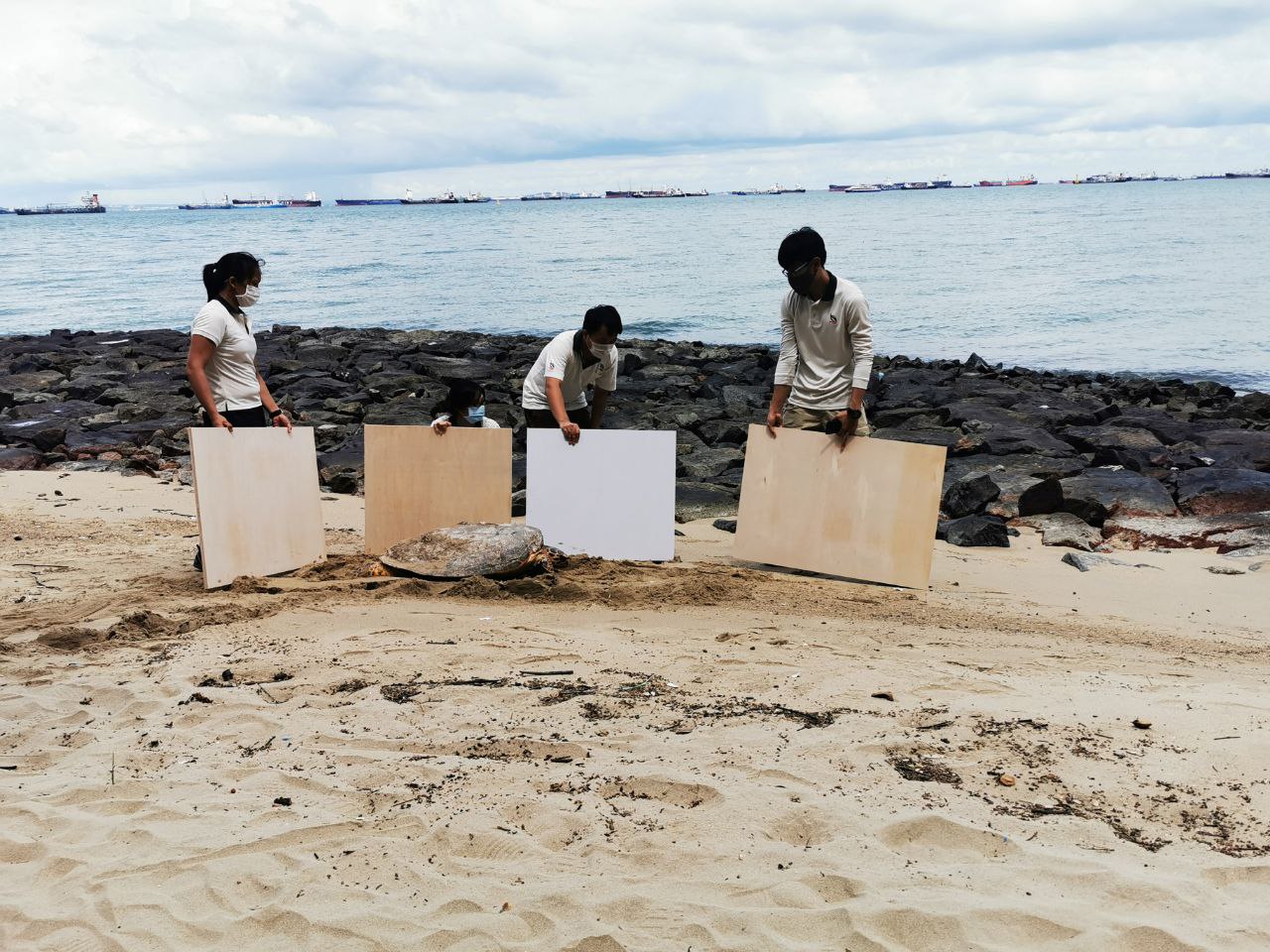 Photo by Zheng Zhangxin.
Photo by Zheng Zhangxin.
The female turtle left ECP at around 1:30pm
Tracking turtles found in Singapore important part of conservation efforts
According to NParks, flipper tags are a conventional practice used internationally to track turtles, and they weigh about 5g each.
The sensation of tagging is similar to the piercing of the ear lobe for humans and does not hurt the turtle, NParks added.
Each turtle tags start with the letters SG, followed by four digits:
 Photo courtesy of NParks.
Photo courtesy of NParks.
With these unique codes, the whereabouts of the turtles can be documented and tracked across borders.
Piloted this year, NParks has also attached satellite trackers to the carapaces of two nesting turtles which came onshore.
The satellite tags transmit signals to the orbiting satellites when the turtle surfaces for air.
GPS coordinates will be worked out using the signals, enabling NParks to monitor where the turtles travel.
Thes efforts to track the turtles help NParks to better understand their movement and nesting habits, as well as their populations.
Through tracking, NParks can identify sites in Singapore that are important to these rare turtles and come up with effective conservation strategies.
Each mature female turtle only nest once every three to four years and long-term tracking helps NParks to estimate the population of nesting turtles more accurately as well.
Critically endangered
Hawksbill turtles are one of the two sea turtle species that come to Singapore shores.
The hawksbill turtles have been threatened by the loss of nesting beaches as well as sea pollution such as being caught in abandoned fishing nets.
They are also being hunted for its shell and eggs by poachers.
What do you do if you see a turtle?
NParks advised members of the public to call NParks helpline (1800-471-7300) if a turtle is spotted.
If you encounter a turtle, do keep their distance and speak softly especially when a nesting turtle is sighted.
The deputy director of biodiversity (marine parks) at NParks, Collin Tong Hor Yee, also reminded public to avoid using flash photography if you spot a turtle at night and also try to stay out of the turtle's sight.
One should also keep clear of tracks left by the turtle as researchers use the tracks to identify the species of the turtle and to locate the nest.
Read more here.Top photos by Zheng Zhangxin
If you like what you read, follow us on Facebook, Instagram, Twitter and Telegram to get the latest updates.
